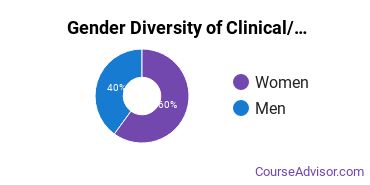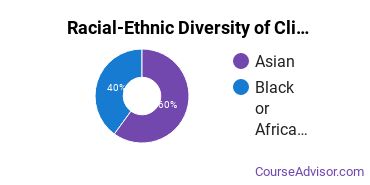Clinical/Medical Laboratory Science at St John’s University - New York
Every clinical/medical laboratory science school has its own distinct culture and strengths. We've pulled together some statistics and other details to help you see how the clinical laboratory science program at St John's University - New York stacks up to those at other schools.STJ is located in Queens, New York and has a total student population of 20,143.
Want to know more about the career opportunities in this field? Check out the Careers in Clinical/Medical Laboratory Science section at the bottom of this page.
Featured St John's University - New York Programs
Learn about start dates, transferring credits, availability of financial aid, and more by contacting the universities below.
Take your associate degree in an allied health field to the next level with this specialized transfer friendly online bachelor of science from Southern New Hampshire University.
STJ Clinical/Medical Laboratory Science Degrees Available
- Bachelor’s Degree in Clinical Laboratory Science
Featured St John's University - New York Programs
Learn about start dates, transferring credits, availability of financial aid, and more by contacting the universities below.
Take your associate degree in an allied health field to the next level with this specialized transfer friendly online bachelor of science from Southern New Hampshire University.
STJ Clinical/Medical Laboratory Science Rankings
The clinical laboratory science major at STJ is not ranked on College Factual’s Best Colleges and Universities for Clinical/Medical Laboratory Science. This could be for a number of reasons, such as not having enough data on the major or school to make an accurate assessment of its quality.
Clinical Laboratory Science Student Demographics at STJ
Take a look at the following statistics related to the make-up of the clinical laboratory science majors at St John’s University - New York.
STJ Clinical/Medical Laboratory Science Bachelor’s Program

Prospective students may be interested in knowing that this school graduates 5% more racial-ethnic minorities in its clinical laboratory science bachelor's program than the national average.*
The following table and chart show the race/ethnicity for students who recently graduated from St John's University - New York with a bachelor's in clinical laboratory science.

| Race/Ethnicity | Number of Students |
|---|---|
| Asian | 4 |
| Black or African American | 0 |
| Hispanic or Latino | 0 |
| White | 3 |
| International Students | 0 |
| Other Races/Ethnicities | 0 |
Concentrations Within Clinical/Medical Laboratory Science
The following clinical laboratory science concentations are available at St John's University - New York. The table shows all degrees awarded in this field awarded for all degree levels at St John's University - New York. A concentration may not be available for your level.
| Concentration | Annual Degrees Awarded |
|---|---|
| Laboratory Sciences & Medical Technology | 5 |
Related Majors
- Public Health
- Health & Medical Administrative Services
- Mental & Social Health Services
- Other Health Professions
- Allied Health Professions
Related Programs
Learn about other programs related to St John's University - New York that might interest you.
Take your associate degree in an allied health field to the next level with this specialized transfer friendly online bachelor of science from Southern New Hampshire University.
Careers That Clinical Laboratory Science Grads May Go Into
A degree in clinical laboratory science can lead to the following careers. Since job numbers and average salaries can vary by geographic location, we have only included the numbers for NY, the home state for St John's University - New York.
| Occupation | Jobs in NY | Average Salary in NY |
|---|---|---|
| Health Specialties Professors | 22,170 | $127,230 |
| Phlebotomists | 6,190 | $40,630 |
| Surgical Technologists | 5,750 | $55,310 |
| Health Technologists and Technicians | 5,280 | $55,700 |
| Medical Equipment Preparers | 3,600 | $43,450 |
References
*The racial-ethnic minorities count is calculated by taking the total number of students and subtracting white students, international students, and students whose race/ethnicity was unknown. This number is then divided by the total number of students at the school to obtain the racial-ethnic minorities percentage.
- College Factual
- National Center for Education Statistics
- O*NET Online
- Image Credit: By Zeuscgp under License
More about our data sources and methodologies.

